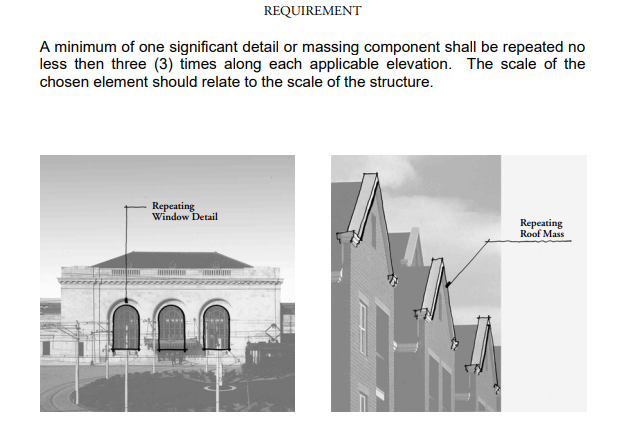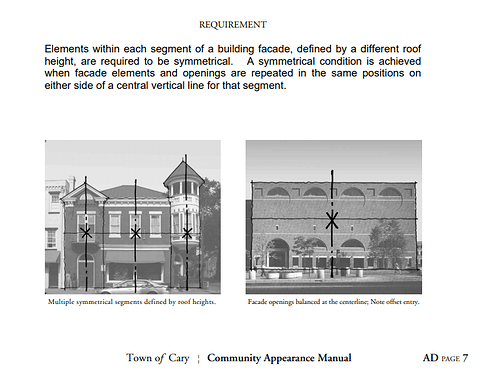Let me clarify. The people in Cary are fine. I know many people that live there and are not snooty. But the overall perception of Cary as a whole.
Let me be clear. The overall perception of Cary that you and others have is the problem that I have. Been living there for 20 years and I hear it from you all way too much. Is the problem that you have with Cary because they are so very successful as a well run city? are the homes too big? Is it jealousy? or what? I mean I don’t waste my time and thoughts hating on some other city…
To be a little frank, this is probably just a perception that you might be getting from your own circles. I’m sure 120,000+ residents can’t all be snooty.
I don’t know. While I agree with TedF that Cary is just like any other suburb, I would say from experience, the perception that it is a snooty place is quite widespread. Maybe it’s just because people like to repeat what they hear…
Perhaps. I just try and discourage generalizations. You hear them all the time. “Durham is dangerous” “Cary is snooty” “Young people are lazy”
Let’s not feed that.
I don’t think of Cary as pretentious or “snooty,” but it seems that the town has tons of aesthetic rules for what property owners can do with their property, which could be read as pretentious or trying to “protect” the town from diversity. Maybe that’s where the “snooty” perception comes from—the need for such strict control.
I also perceive Cary as a calm, uneventful, manicured place to live, which I understand is exactly what some people are looking for. It’s not for me, but I’m glad people who want to live there are happy. To each their own.
That said, suburban sprawl isn’t sustainable in the long run. Without thoughtful development, it will eventually make places like Cary far more congested as farther-flung people have to pass through to get to job centers.
Actually Cary has very few “aesthetic” rules for property owners. I have absolutely none as far as my own house is concerned. Most of those rules that you refer to are actually enforced by HOA’s. Obviously they have rules and codes for new construction just like everybody else does. I don’t think the Cary is all that much different from Raleigh or Apex because I see the exact same thing wherever I go.
And have you been to places like New York City? Washington DC? Chicago? etc… Congestion is even worse in large urban cities than it is here in this area. So I think that statement is not a particularly valid one. With that being said, obviously other forms of transportation other than cars still need to be put into place as a roads only system will never work once a critical mass has been reached.
And yes I do like calm, uneventful (less crime), and manicured homes with large(ish) yards and lots of trees, easy access to parks and greenways, and an above average standard of services that Cary provides.
I live in Cary, too. Actually not that far from you. I mostly moved here to be closer to where I work. I love the greenways and the number and quality of parks and playgrounds here is unmatched. I am not especially in love with the suburbanness. I wish there were more that I could walk to, but it is hard to find that affordably anywhere. I fault zoning.
Walkability is becoming important to a lot of people and people like to be near lively areas. Cary has been slow to recognize this. Although they are beginning to allow things like CTC redevelopment and Fenton to move forward, I think that the next step will be to allow mixed use infill throughout the town, especially as existing 1980s era shopping centers age. Kildare Farm Road between downtown and Cary Parkway would be a good spot.
Cary’s current land use policies are more suburban than Raleigh’s, for sure, but at the same time the current town council is less reactionary than Raleigh’s “Council of No”. They have moved forward with plans for a downtown park designed to be a regional draw, with a substantial mixed use development component, in spite of neighborhood demands to do something smaller and less bold. (Mendell/Cox/Crowder etc would surely have given in.)
Finally, lots of people point to Cary as being well run, and I agree that they are not bad at delivering municipal services. But the low tax rate in Cary that the town advertises as evidence is a bit misleading. The lower rate in Cary is possible because the average valuation per person in Cary is higher. This means that while the tax rate is lower, property tax paid per capita is not. (My calculations: $553 property tax per capita last year in Cary, $545 in Raleigh. Cary leans more residential than Raleigh so the difference in what residents pay is actually bigger than that.) Plus, a big bump in Cary’s tax rate is on the horizon with a $225 million bond issue on the ballot in October.
A big part of why this big bond issue is traffic mitigation. Mitigating traffic through road and intersection widenings gets more and more expensive as the area spreads out. It is what it is.
LOL, see why I did not call out Cary in first post as maybe being appose to any merger of towns in Wake count - 
I guess that’s a misconception—why does it exist? I honestly don’t know.
What about businesses? It seems like they’re discouraged from having signs visible from roads? I often have a hard time finding places because of this. Maybe it’s just a coincidence rather than an ordinance. Genuinely curious.
I grew up in a suburb of Miami called Kendall (and I’ve been to each city mentioned). Thirty years ago (when urban Miami was legitimately dangerous), it was a lot like Cary. But housing/suburban sprawl proliferated to the south and west into agricultural land and to the edge of the Everglades (places many thought no one would want to live) as I was growing up. Those outer suburbs were built as more dense SFH neighborhoods because of demand/affordability.
Kendall is now super congested because of the nature of the growth. Lots more people live south and west, but most people have to come east for jobs. Traffic is horrendous and all the freeways are now tolled. You get the congestion of an urban area without the benefits because driving everywhere is still necessary and it takes forever to get anywhere.
TL;DR: I think congestion in large metro areas is caused partly by suburban sprawl continuing to radiate away from job centers. It’s fine right now, but if Cary (or Apex, Wake Forest, etc.) end up closer to the “core” because more residential development continues to and beyond Pittsboro, Sanford, etc., it won’t be the same. I think denser development near job centers will help protect the status quo in these areas.
Cary has plenty of design standards for commercial buildings. They essentially dictate what your building should look like.
what i love about cary usa is all the matching mailboxes…so cool and uniq…
I have seen a few neighborhoods that have those… some where every quadplex home was white in the whole subdivision. But my neighborhood nor any that I drive through regularly has that… again that would be a HOA thing and not a city thing…
I agree. That’s what they do in Russia.
I guess that’s a misconception—why does it exist? I honestly don’t know.
It’s not really a misconception. At least for commercial buildings, Cary’s design guidelines are a pain in the ass to work with compared to surrounding cities. They’re well-intentioned but overly prescriptive, particularly for competent architects aiming to produce design that is balanced but not overtly traditional.
For example, see below:

Cary’s image also suffers from stories like this
It has been ready for business since June, but Gypsy’s Shiny Diner still sits vacant – not open for business. The reason? Owner, Gypsy Gilliam and the town of Cary have yet to agree on how much of the diner should be silver and how much should be beige. But, at long last, it appears the warring factions may have reached a compromise. The dispute started many months ago when the Town of Cary said it couldn’t live with silver aluminum. Gyspy Gilliam, who owns the diner, couldn’t live with the beige brick Cary demanded. Now, it seems both have decided they can live with greenery. So it might all be settled by simply allowing bushes to grow three feet tall, as high as the town wanted the bricks in the first place.
And as recent as 2004, neon signs were banned, and shops were prohibited from having sandwich boards or even balloons.
Can you actually give some recent examples?I believe Shiny Diner has been open since 1997 according to their twitter page. So bringing stuff from over 20 years ago isn’t even remotely relevant. And neon signs as well as free standing signs are not allowed. Which is not a bad thing for a city that has no real down town. Cary also doesn’t have green, red, and yellow gas stations either… This is exactly why people like me need to be on this site. The amount of soft hate towards Cary, suburbs in general, cars, highways, buildings 20 stories and under, parking decks and lots, etc… is really amazing. Sometimes I just feel like I have to speak up just so people with one-sided views on how they demand that the world must be gets another opinion and viewpoint.
Let’s quit berating/defending Cary, this is the wrong place for that. This is a Downtown RALEIGH forum.
Well the room title does say urban sprawl… but I was done anyway.

Twenty Characters
And it doesn’t take much for those inner-ring suburbs to lose their affluence, too. As new suburbia expands outward, and new urban developments build up the cores, it’s those areas in the middle that suffer the most. I grew up in Northeast Philadelphia, which in the 80s was a solid middle-class area…now, not so much. Stores closing up, crime way up, families moving out. This can easily happen to the early Raleigh suburbs like Cary, North Raleigh (between 440 and 540), etc.
